Most Feared Animals
The Top Ten
1 Sharks
 Sharks are a group of elasmobranch fish characterized by a cartilaginous skeleton, five to seven gill slits on the sides of the head, and pectoral fins that are not fused to the head. Modern sharks are classified within the clade Selachimorpha (or Selachii) and are the sister group to the rays. However, the term "shark" has also been (incorrectly) used to refer to extinct members of the subclass Elasmobranchii,... read more
Sharks are a group of elasmobranch fish characterized by a cartilaginous skeleton, five to seven gill slits on the sides of the head, and pectoral fins that are not fused to the head. Modern sharks are classified within the clade Selachimorpha (or Selachii) and are the sister group to the rays. However, the term "shark" has also been (incorrectly) used to refer to extinct members of the subclass Elasmobranchii,... read more
 Sharks are a group of elasmobranch fish characterized by a cartilaginous skeleton, five to seven gill slits on the sides of the head, and pectoral fins that are not fused to the head. Modern sharks are classified within the clade Selachimorpha (or Selachii) and are the sister group to the rays. However, the term "shark" has also been (incorrectly) used to refer to extinct members of the subclass Elasmobranchii,... read more
Sharks are a group of elasmobranch fish characterized by a cartilaginous skeleton, five to seven gill slits on the sides of the head, and pectoral fins that are not fused to the head. Modern sharks are classified within the clade Selachimorpha (or Selachii) and are the sister group to the rays. However, the term "shark" has also been (incorrectly) used to refer to extinct members of the subclass Elasmobranchii,... read more The movie creeps me out a lot
2 Snakes
 Snakes are elongated, legless, carnivorous reptiles of the suborder Serpentes that can be distinguished from legless lizards by their lack of eyelids and external ears.
Snakes are elongated, legless, carnivorous reptiles of the suborder Serpentes that can be distinguished from legless lizards by their lack of eyelids and external ears.
 Snakes are elongated, legless, carnivorous reptiles of the suborder Serpentes that can be distinguished from legless lizards by their lack of eyelids and external ears.
Snakes are elongated, legless, carnivorous reptiles of the suborder Serpentes that can be distinguished from legless lizards by their lack of eyelids and external ears. I always heard the black mamba is the most feared
They are the most feared animal they have to be the deadlist to
3 Crocodiles
4 Bats
5 Lions
6 Tigers
7 Bears
8 Wolves
 The wolf (Canis lupus), also known as the gray or grey wolf, is a large canine native to Eurasia and North America. Over thirty subspecies of Canis lupus have been recognized, with gray wolves comprising the wild subspecies. As the largest extant member of the Canidae family, the wolf is distinguished... read more
The wolf (Canis lupus), also known as the gray or grey wolf, is a large canine native to Eurasia and North America. Over thirty subspecies of Canis lupus have been recognized, with gray wolves comprising the wild subspecies. As the largest extant member of the Canidae family, the wolf is distinguished... read more
 The wolf (Canis lupus), also known as the gray or grey wolf, is a large canine native to Eurasia and North America. Over thirty subspecies of Canis lupus have been recognized, with gray wolves comprising the wild subspecies. As the largest extant member of the Canidae family, the wolf is distinguished... read more
The wolf (Canis lupus), also known as the gray or grey wolf, is a large canine native to Eurasia and North America. Over thirty subspecies of Canis lupus have been recognized, with gray wolves comprising the wild subspecies. As the largest extant member of the Canidae family, the wolf is distinguished... read more
9 Humans
 Humans (Homo sapiens) are the most abundant and widespread species of primate, characterized by bipedalism and large, complex brains. This has enabled the development of advanced tools, culture, and language. Humans are highly social and tend to live in complex social structures composed of many cooperating and competing groups, from families and kinship networks to political states. Social interactions... read more
Humans (Homo sapiens) are the most abundant and widespread species of primate, characterized by bipedalism and large, complex brains. This has enabled the development of advanced tools, culture, and language. Humans are highly social and tend to live in complex social structures composed of many cooperating and competing groups, from families and kinship networks to political states. Social interactions... read more
 Humans (Homo sapiens) are the most abundant and widespread species of primate, characterized by bipedalism and large, complex brains. This has enabled the development of advanced tools, culture, and language. Humans are highly social and tend to live in complex social structures composed of many cooperating and competing groups, from families and kinship networks to political states. Social interactions... read more
Humans (Homo sapiens) are the most abundant and widespread species of primate, characterized by bipedalism and large, complex brains. This has enabled the development of advanced tools, culture, and language. Humans are highly social and tend to live in complex social structures composed of many cooperating and competing groups, from families and kinship networks to political states. Social interactions... read more
10 Hippos
 The common hippopotamus, or hippo, is a large, mostly herbivorous mammal in sub-Saharan Africa, and one of only two extant species in the family Hippopotamidae, the other being the pygmy hippopotamus.
The common hippopotamus, or hippo, is a large, mostly herbivorous mammal in sub-Saharan Africa, and one of only two extant species in the family Hippopotamidae, the other being the pygmy hippopotamus.
 The common hippopotamus, or hippo, is a large, mostly herbivorous mammal in sub-Saharan Africa, and one of only two extant species in the family Hippopotamidae, the other being the pygmy hippopotamus.
The common hippopotamus, or hippo, is a large, mostly herbivorous mammal in sub-Saharan Africa, and one of only two extant species in the family Hippopotamidae, the other being the pygmy hippopotamus. While they don't look dangerous but they can kill.
The Contenders
11 Gorillas
 Gorillas are herbivorous, predominantly ground-dwelling great apes that inhabit the tropical forests of equatorial Africa. The genus Gorilla is divided into two species: the eastern gorilla and the western gorilla, and either four or five subspecies. The DNA of gorillas is highly similar to that of humans, from 95 to 99% depending on what is included, and they are the next closest living relatives... read more
Gorillas are herbivorous, predominantly ground-dwelling great apes that inhabit the tropical forests of equatorial Africa. The genus Gorilla is divided into two species: the eastern gorilla and the western gorilla, and either four or five subspecies. The DNA of gorillas is highly similar to that of humans, from 95 to 99% depending on what is included, and they are the next closest living relatives... read more
 Gorillas are herbivorous, predominantly ground-dwelling great apes that inhabit the tropical forests of equatorial Africa. The genus Gorilla is divided into two species: the eastern gorilla and the western gorilla, and either four or five subspecies. The DNA of gorillas is highly similar to that of humans, from 95 to 99% depending on what is included, and they are the next closest living relatives... read more
Gorillas are herbivorous, predominantly ground-dwelling great apes that inhabit the tropical forests of equatorial Africa. The genus Gorilla is divided into two species: the eastern gorilla and the western gorilla, and either four or five subspecies. The DNA of gorillas is highly similar to that of humans, from 95 to 99% depending on what is included, and they are the next closest living relatives... read more Gorillas are peaceful. Chimps are different story. They make humans look like walkers from The Walking Dead.
12 Flies
13 Bees
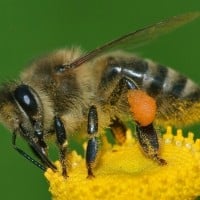

14 Komodo Dragon
 The Komodo dragon, also known as the Komodo monitor, is a large species of lizard found in the Indonesian islands of Komodo, Rinca, Flores, Gili Motang, and Padar.
The Komodo dragon, also known as the Komodo monitor, is a large species of lizard found in the Indonesian islands of Komodo, Rinca, Flores, Gili Motang, and Padar.
 The Komodo dragon, also known as the Komodo monitor, is a large species of lizard found in the Indonesian islands of Komodo, Rinca, Flores, Gili Motang, and Padar.
The Komodo dragon, also known as the Komodo monitor, is a large species of lizard found in the Indonesian islands of Komodo, Rinca, Flores, Gili Motang, and Padar.
15 Mosquito
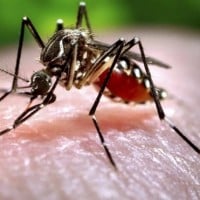 Spanish for "small fly," mosquitoes are insects that have been known to cause various diseases. A sample of diseases caused by mosquitoes: malaria, yellow fever, Chikungunya, West Nile virus, dengue fever, filariasis, Zika virus.
Spanish for "small fly," mosquitoes are insects that have been known to cause various diseases. A sample of diseases caused by mosquitoes: malaria, yellow fever, Chikungunya, West Nile virus, dengue fever, filariasis, Zika virus.
 Spanish for "small fly," mosquitoes are insects that have been known to cause various diseases. A sample of diseases caused by mosquitoes: malaria, yellow fever, Chikungunya, West Nile virus, dengue fever, filariasis, Zika virus.
Spanish for "small fly," mosquitoes are insects that have been known to cause various diseases. A sample of diseases caused by mosquitoes: malaria, yellow fever, Chikungunya, West Nile virus, dengue fever, filariasis, Zika virus.
16 Tsetse fly
17 Scorpion
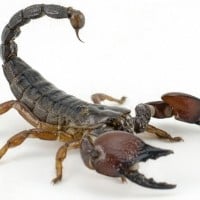

18 Cone Snail
One drop of it's venom can kill around 20 adult men
19 Cape Buffalo
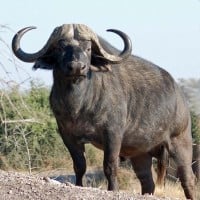 The African buffalo or Cape buffalo is a large African bovine. Syncerus caffer caffer, the Cape buffalo, is the typical subspecies, and the largest one, found in Southern and East Africa.
The African buffalo or Cape buffalo is a large African bovine. Syncerus caffer caffer, the Cape buffalo, is the typical subspecies, and the largest one, found in Southern and East Africa.
 The African buffalo or Cape buffalo is a large African bovine. Syncerus caffer caffer, the Cape buffalo, is the typical subspecies, and the largest one, found in Southern and East Africa.
The African buffalo or Cape buffalo is a large African bovine. Syncerus caffer caffer, the Cape buffalo, is the typical subspecies, and the largest one, found in Southern and East Africa.
20 Spider
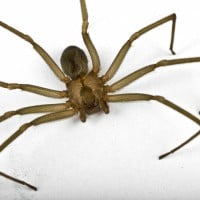 A venomous spider native to the central and southern United States, the Brown Recluse is known for its reclusive habits and preference for dark, undisturbed places. Its venom can cause necrotic skin lesions in humans, making it a species to be cautious of when encountered.
A venomous spider native to the central and southern United States, the Brown Recluse is known for its reclusive habits and preference for dark, undisturbed places. Its venom can cause necrotic skin lesions in humans, making it a species to be cautious of when encountered.
 A venomous spider native to the central and southern United States, the Brown Recluse is known for its reclusive habits and preference for dark, undisturbed places. Its venom can cause necrotic skin lesions in humans, making it a species to be cautious of when encountered.
A venomous spider native to the central and southern United States, the Brown Recluse is known for its reclusive habits and preference for dark, undisturbed places. Its venom can cause necrotic skin lesions in humans, making it a species to be cautious of when encountered.
21 Rhinoceros
 A rhinoceros, commonly abbreviated to rhino, is a member of any of the five extant species (or numerous extinct species) of odd-toed ungulates in the family Rhinocerotidae. (It can also refer to a member of any of the extinct species of the superfamily Rhinocerotoidea.) Two of the extant species are native to Africa, and three to South and Southeast Asia... read more
A rhinoceros, commonly abbreviated to rhino, is a member of any of the five extant species (or numerous extinct species) of odd-toed ungulates in the family Rhinocerotidae. (It can also refer to a member of any of the extinct species of the superfamily Rhinocerotoidea.) Two of the extant species are native to Africa, and three to South and Southeast Asia... read more
 A rhinoceros, commonly abbreviated to rhino, is a member of any of the five extant species (or numerous extinct species) of odd-toed ungulates in the family Rhinocerotidae. (It can also refer to a member of any of the extinct species of the superfamily Rhinocerotoidea.) Two of the extant species are native to Africa, and three to South and Southeast Asia... read more
A rhinoceros, commonly abbreviated to rhino, is a member of any of the five extant species (or numerous extinct species) of odd-toed ungulates in the family Rhinocerotidae. (It can also refer to a member of any of the extinct species of the superfamily Rhinocerotoidea.) Two of the extant species are native to Africa, and three to South and Southeast Asia... read more
22 Alligators
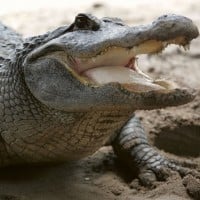 An alligator is a crocodilian in the genus Alligator of the family Alligatoridae. The two living species are the American alligator and the Chinese alligator. Additionally, several extinct species of alligator are known from fossil remains. Alligators have long existed since the Oligocene epoch 37 million years ago.
An alligator is a crocodilian in the genus Alligator of the family Alligatoridae. The two living species are the American alligator and the Chinese alligator. Additionally, several extinct species of alligator are known from fossil remains. Alligators have long existed since the Oligocene epoch 37 million years ago.
 An alligator is a crocodilian in the genus Alligator of the family Alligatoridae. The two living species are the American alligator and the Chinese alligator. Additionally, several extinct species of alligator are known from fossil remains. Alligators have long existed since the Oligocene epoch 37 million years ago.
An alligator is a crocodilian in the genus Alligator of the family Alligatoridae. The two living species are the American alligator and the Chinese alligator. Additionally, several extinct species of alligator are known from fossil remains. Alligators have long existed since the Oligocene epoch 37 million years ago.BAdd New Item